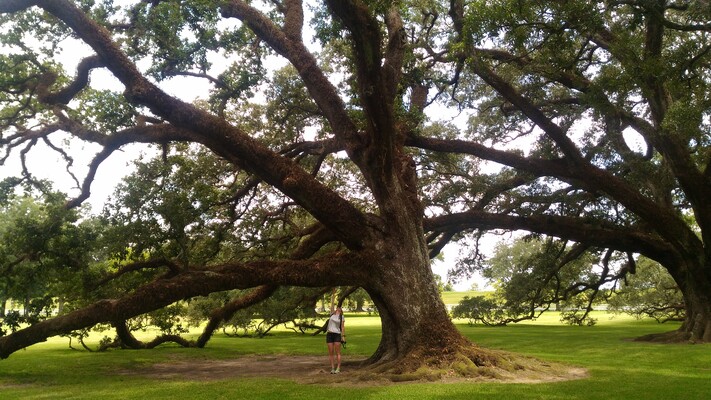
Let me tell you first what this post is NOT about:
It is not a post about any specific activity, resource or solution for the classroom.
It is not a report of a classroom research task or an experiment.
It is not a compendium of useful links. Or stories from a trainer’s life.
Not today. Today I want to write about the classroom magic and, in all honesty, I doubt anyone can find it of any use. Really. This is solely for my writer’s and teacher’s well-being.

When the magic happens OR When kids become communicators in L2
Maximising production is definitely a professional obsession.
Although a) it is probably better to call it ‘my professional interest’ and b) you have probably noticed, if you have been reading my posts (It not, you can find the chapter here). This is what I have on my mind while planning my lessons. This is what I think about while looking at the coursebooks, illustrations, stories and games. ‘How do I get my kids to speak?’

If you are a teacher of young children, you are a bit like a gardener.
There is a lot of digging, a lot of watering, some weeding, and, above all, lots and lots (and lots) of waiting before you get a chance to even hope about any real fruit or flowers. Or any real communication, in our case. Which does not mean that it is boring or uneventful! Quite the contrary!
It is a wonderful journey, filled with treasured moments, from the very first steps into the classroom and any signals that we have exchanged ideas and understood each other. Cautiously walking in, on day 1, a bit uncertain but also very curious what this new auntie (that’s what I have been referred to, in Russian, in Spanish and in Portugues) has to offer. Pointing at the right flashcards, nodding in lieu of a yes, lining up because the teacher asked for it, picking out for the red crayon in a colouring dication or replying ‘Hello’ to your ‘Hello’ Drilling and reciting all the colours and so is confidently shouting out ‘Cat!’ to correct the teacher when she shows you a picture of a cat but, somehow, she says ‘It’s a dog!’ (though with this special elfin smile and a spark in her eye)… All of this is priceless, amazing, magical. And necessary.

Then comes the plateu.
Yes, a language learning plateu. In case of the primary or the pre-primary language learners it has got nothing to do with reaching the intermediate level (quite often the level associated with the concept of plateau), quite the contrary, but, it does happen with the little kids, too (and yes, this is just the idea that I got right now and decided to use it in this post).
So, taking the level aside, what do I (very subjectively) see as the language learning plateu in early L2 learning?
- kids feel confident in the classroom, with its routines and traditions, the teacher, the coursebook, the lesson and the course framework
- kids feel comfortable with their peers and the bunch of kids starts resembling a group and a team
- kids are curious and easily learn new words (aka single words) and they can reproduce them on teacher’s request, the action – reaction, teacher – student or teacher – students goes very smoothly
- kids produce some simple sentences, depending on the curriculum and the programme
- kids know and produce some phrases related to the repeated activities during the lesson
The first two points here are not directly related to the actual language production but due to the age of children, they are of the utmost importance and for that reason they have found their place here. This is the point in the course when the age-related characteristics stop being an issue and teacher and children can focus more on the language learning itself.
Finally, the learning happens, we move from unit to unit to unit. We go from unit 1 (colours), to unit 2 (school), to unit 3 (fruit), from level 1 to level 2, the kids are growing, the kids know more, they are under control. The kids are happy and the teacher is happy. The only thing missing is ‘They lived happily ever after’…
Don’t get me wrong. I am not UN-happy with the classes going beautifully well. I am not picking at the seams here. This is the state that we, as teachers, dream about. However, this is also the dangrous plateau because we may want to stay there forever. And we should not. Not moving forward equals staying in the same place equals regression. Things going well is a signal that the time has come to do something new, look for new challenges or think of ways of extending the Zone of Proximal Development.
In the very specific context of maximising language production in the VYL world it might mean helping the kids move from ‘the action – reaction’, ‘teacher – student’ and ‘teacher – students’, one word or one sentence production to the next level: a discourse (or a mini-discourse), student – student, student – teacher and spontaneous production aka I say things when I have things to say (and ‘Not because my teacher, the adult asked me’).

The most beautiful day is when the magic happens
There is no way of getting ready for this day, marking it in your calendar and making it your aim. It is when, all of a sudden, it happens – kids say things outside of the framework that you have prepared for the day, outside of the pattern they ‘should‘ be using according to the book. Or when they try to say things that are, clearly, out of their range (yet) but which they need to say. Sometimes it is fully expressed in L1, sometimes partially.
Examples? Yes, sure! Let’s go.
Case study #1
One of my 6 y.o. students, still in pre-school, about to go to school in a few week but have have been using the primary level books since January. She has always been a very active child and an eager students but recently, over the past few weeks, she has just skyrocketed. The magic happened!
We are studying online, she is in her natural habitat, at home where she communicates in Russian. However, during the lesson time, she started to use more English while talking to her brothers. Sometimes, it is fully in English, for example calling him from another room, to join us in a game (‘We are playing! Come!’), sometimes it is a mix of Russian and English (‘Sasha, go, do your thing!’). Sometimes, the baby brother wanders in, during our lesson and he also gets his portion of English, because I welcome him in English and his sisters babbles to him in English, too. Sometimes. We are in our little English bubble while in class and she is really making an effort to communicate in the target language then. Although, not only then, actually! I know it from her mum, that she sometimes plays with her teddies and that some English happens, then, too! Some of them must be English-speaking teddies.
I also noticed that when we play together with the older brother, she really listens to what he is saying and she picks out the useful words and then tries to use them, like, in the same lessons the phrase ‘everyday’ or ‘every day’ and, almost immediately, enjoying the variations such as ‘every minute’ and ‘every second’…
This ‘magic’ goes beyond the immersion in the context and the language creativity and experimentation. My student also started to attempt to maximise the amount of language produced.
Last week we started to practice Present Simple (Do you go swimming?) as a follow-up on the simple ‘Do you like?’ which we have known for quite some time and we were interviewing each other, not as ourselves but as the chosen characters. The main aim was to practise ‘Do you do something?’ and I did not even plan to insist on using ‘at the weekend’ or any other day of the week, leaving it for later. However, in class, my student just started to speak and it was a wonderful experience for me to see how far she would go. First, she’d say ‘do you’, then pause, choose the verb, pause again, choose the object, pause again, choose the preposition of place, pause again and, finally, add the day of the week…
Do you draw on your homework every day? Do you dance in your classes on Fridays? Do you sleep in the school?
I could not keep up with her in my note-taking, because there was so much language and, yes, because I was laughing out loud. Not only because her sentences were great but also because I realised that, this time round, I managed to notice, to seize the moment, in a way.

How to make sure that the magic does happen?
- Let the kids lead the activities (‘Who’s the teacher?’)
- Start introducing pair-work as soon as the kids might be ready
- If possible, include free play slot in your lessons
- Show curiosity, ask questions, even if they seem to be above the kids’ current langauge level
- Model
- Work with the emergent vocabulary but for that it is necessary to be able to speak or at least to understand the kids’ L1 and to provide the word they want to use, even though it is not a part of the wordlist for the level and to keep bringing it back
- Be clever and welcoming when it comes to kids’ way of using L1 in class. Apart from the teacher showing respect for it (please, please, please avoid saying ‘DON’T speak L1’ or ‘NO L1’), there is a way of working it. Not all L1 appears because kids don’t want to speak English. Using L1 is one of the communication strategies and it can be a signal for the teacher as to what the kids want to talk about and what they need the vocabulary and structures for.
- Be clever and welcoming when it comes to kids’ way of dealing with code-switching (aka ‘mixing’ L1 and L2). This is one of the communication strategies and it is the a step towards and an attempt at L2-only communication
- Create the English language environment and provide the exposure with songs, books, games and stories.
- Think of extending this exposure and taking English out of the classroom (aka get the parents, the grandparents, sisters and brothers on board!)
- Continue reading this blog for more ideas:)
And wait. Stretch out and wait. Like in a song by The Smiths…The magic is bound to happen, eventually.
Happy teaching!
